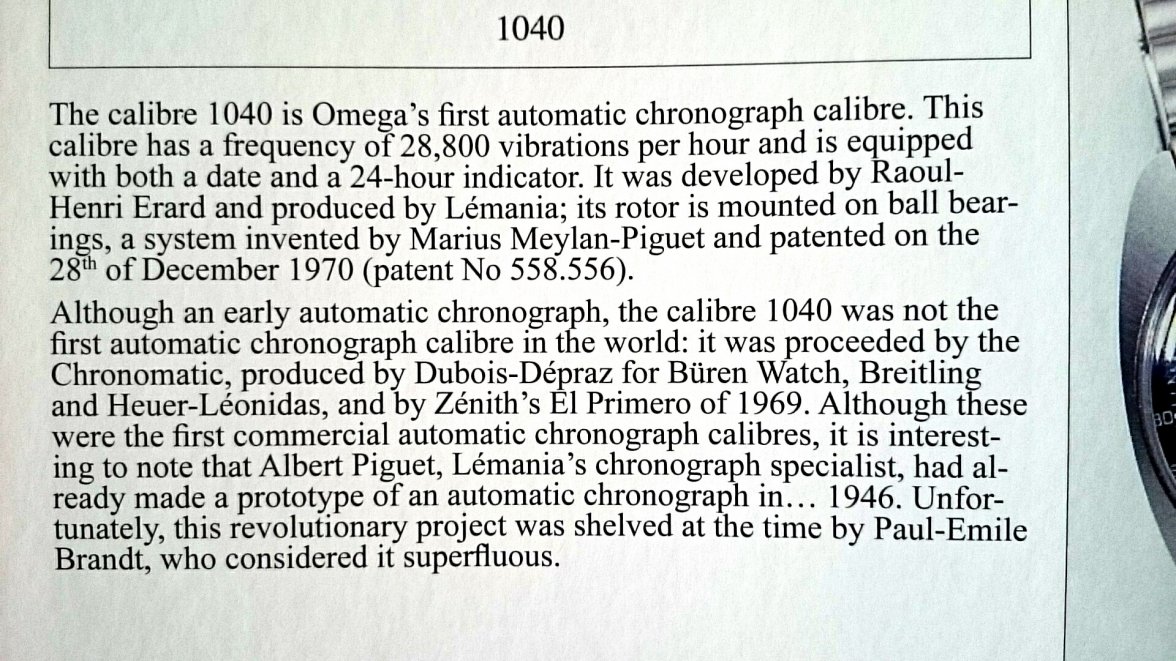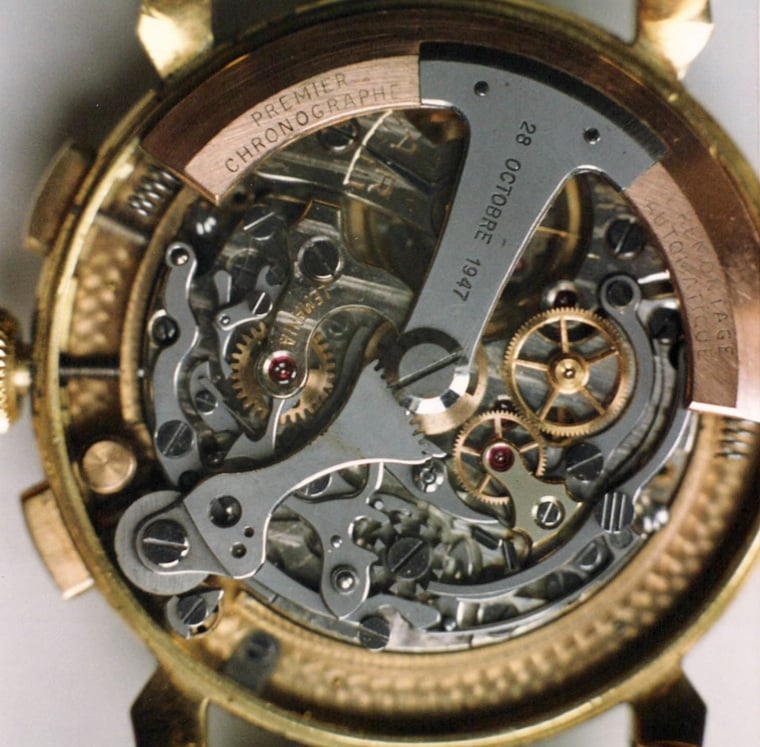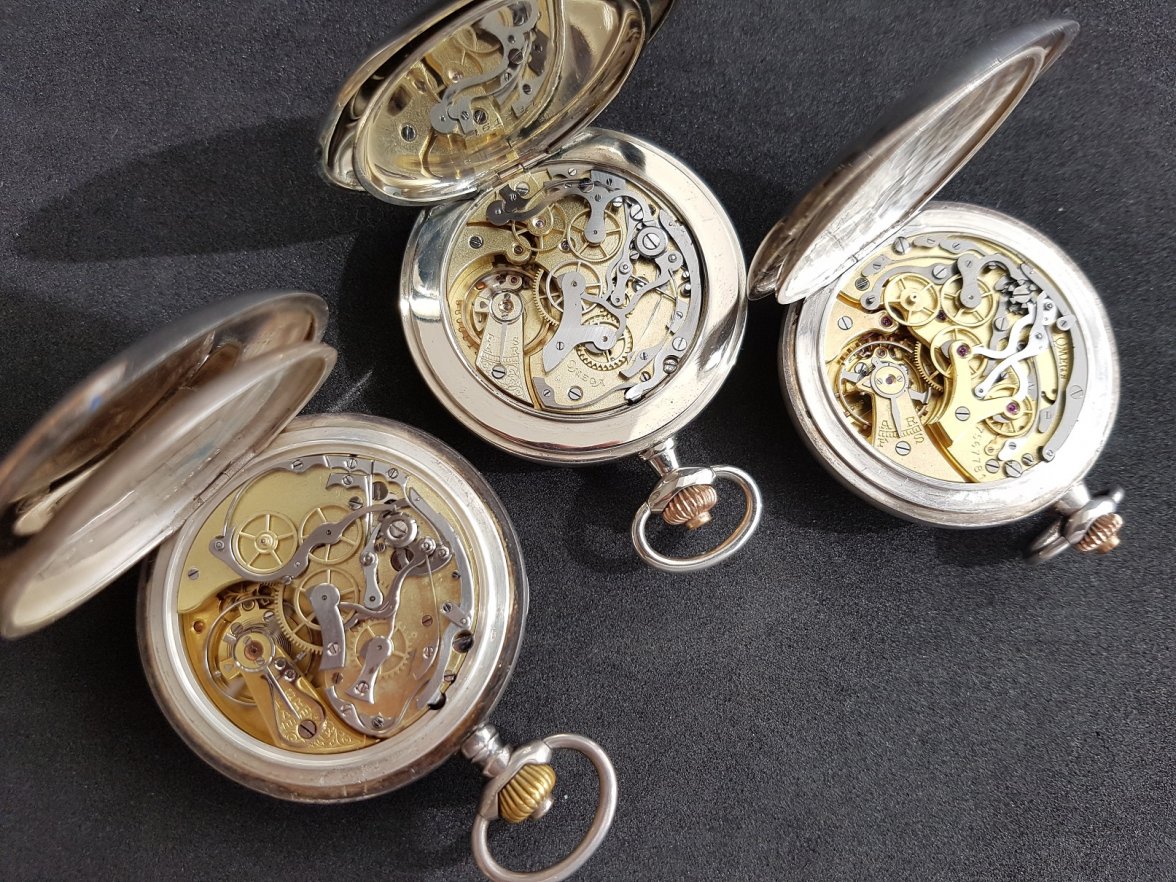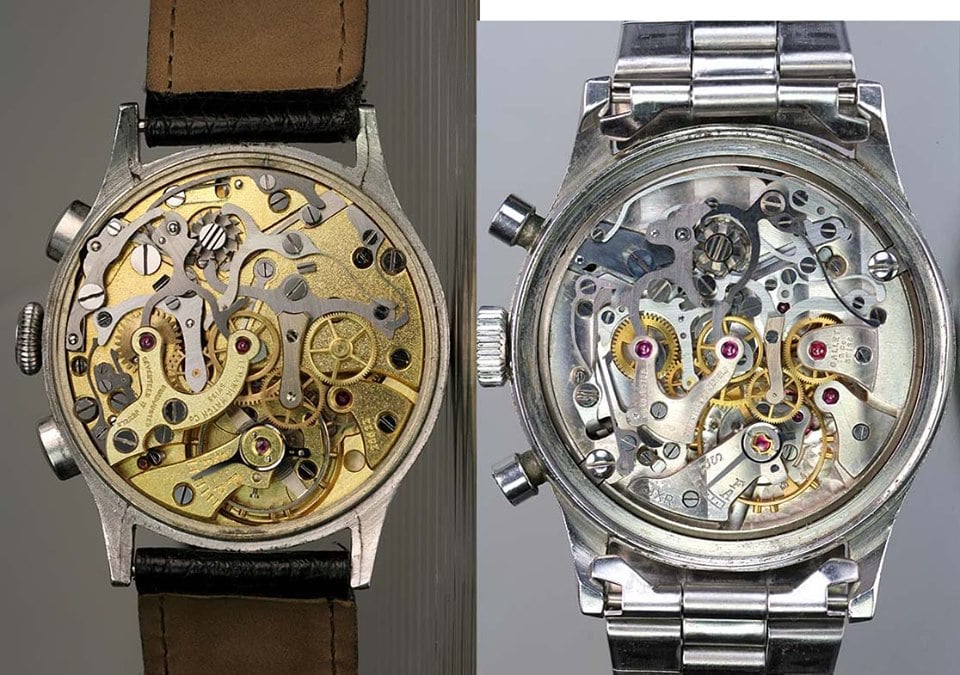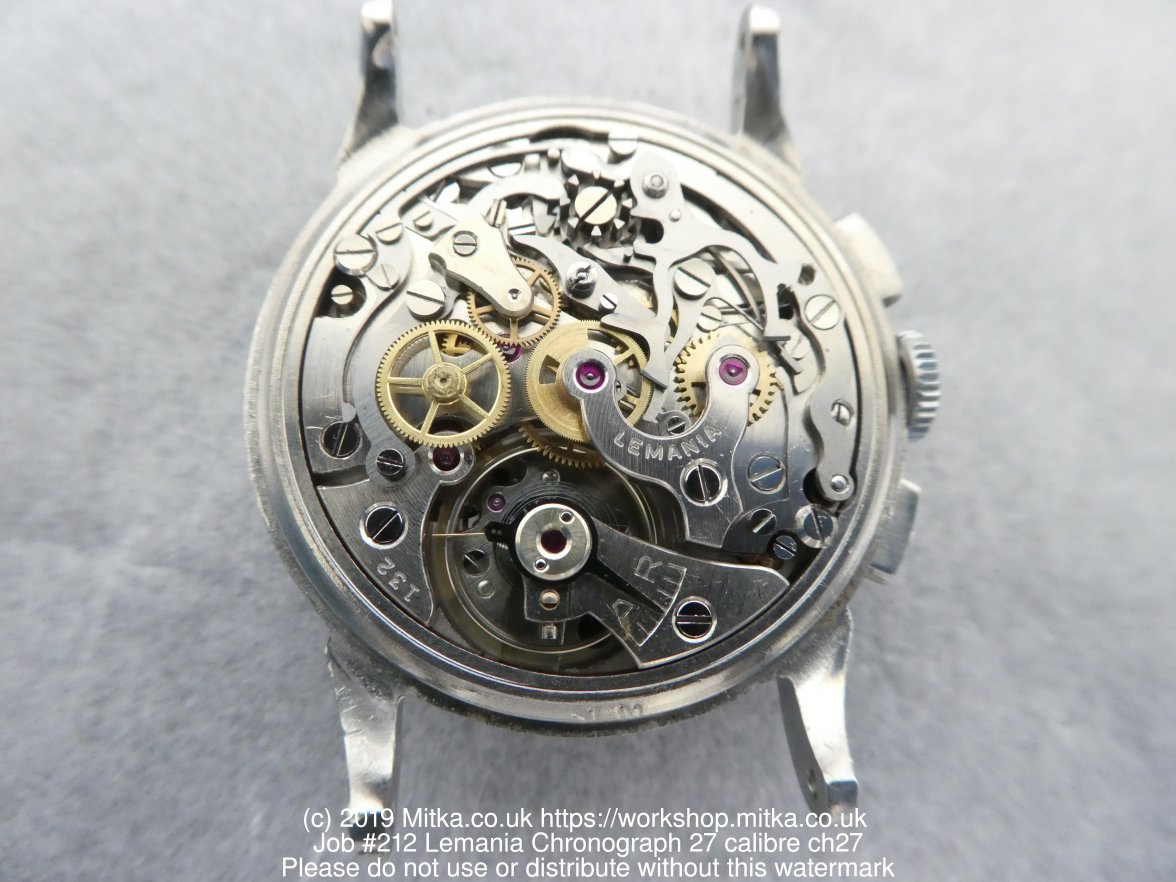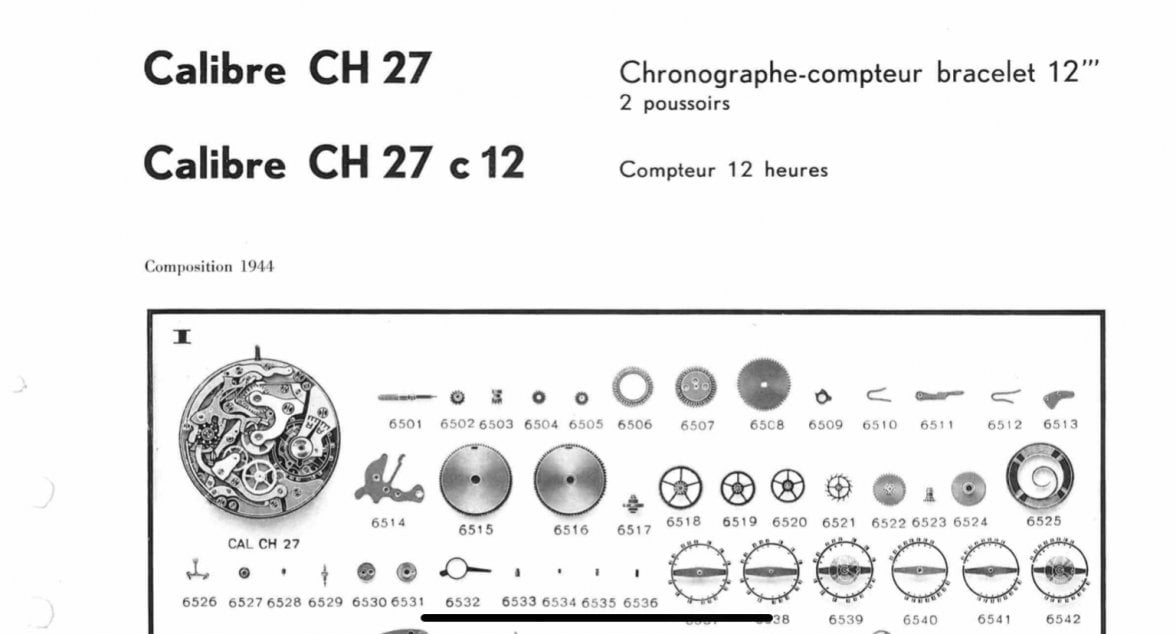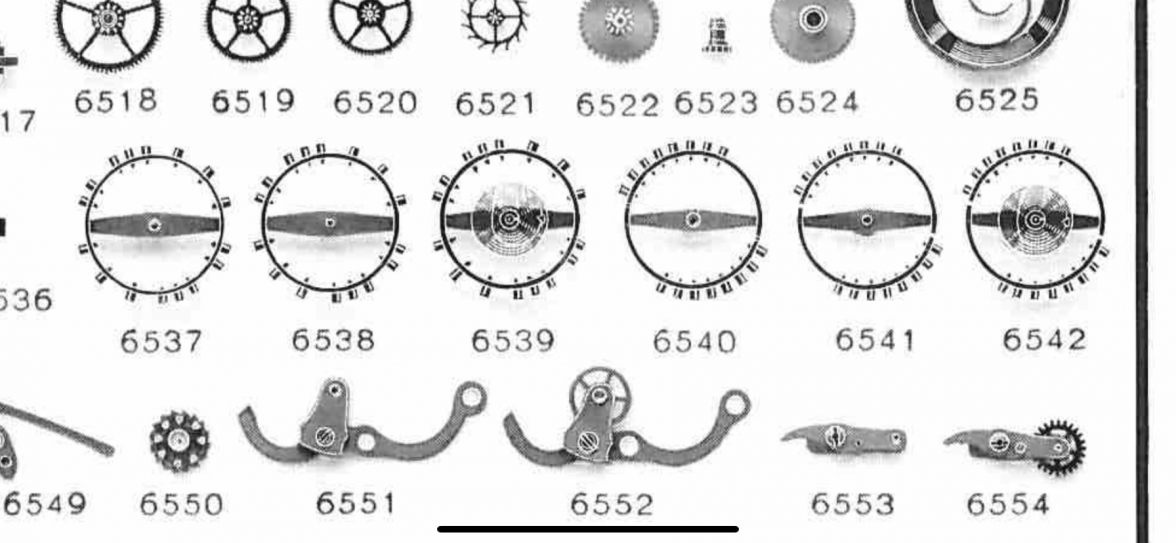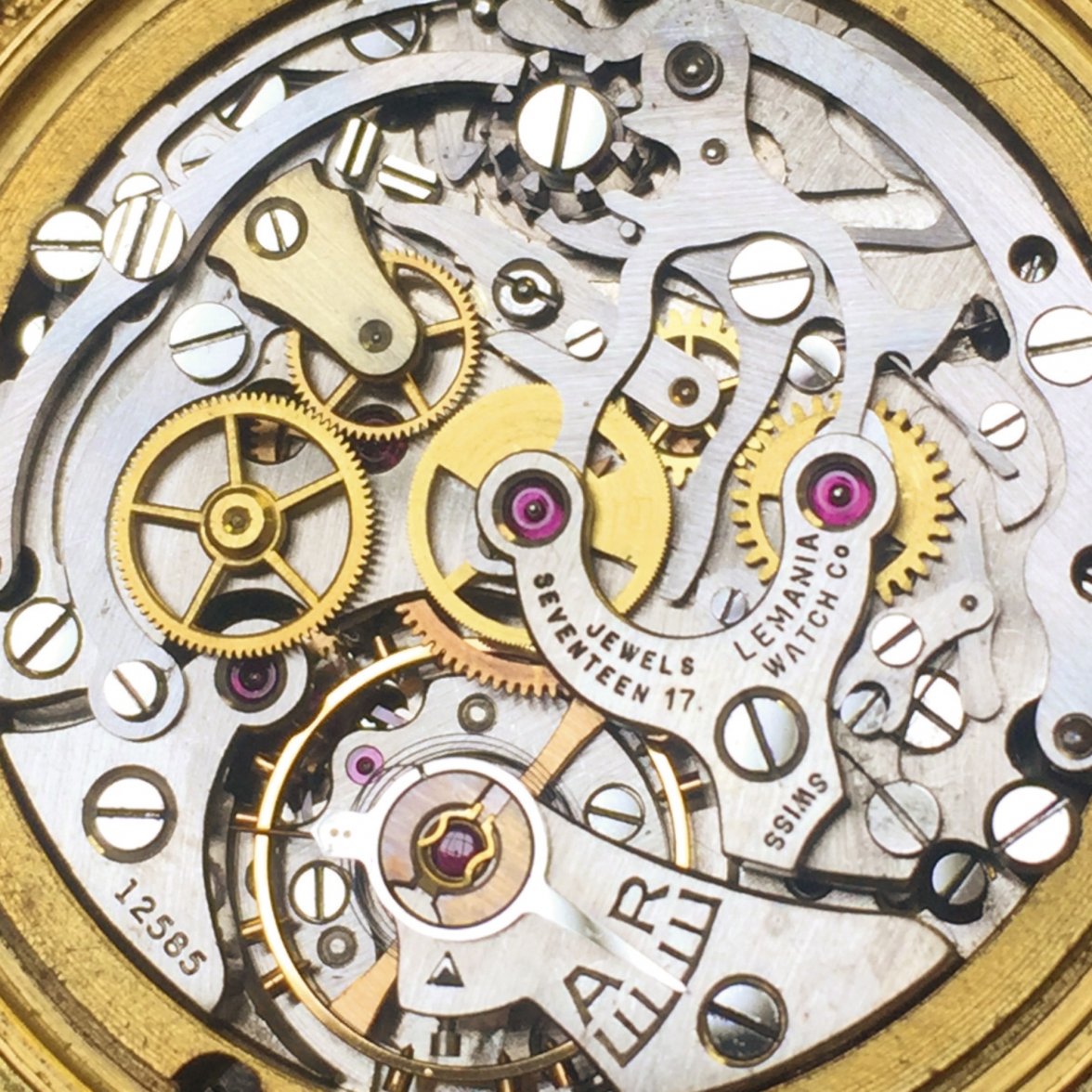Northernman
··LemaniacI've already called shotgun on the next one to turn up 😒, I've been looking for years, literally every Lemania I look at, I check the movement just in case it has a golden ticket inside. I'll try to find some more of the pictures and post a separate thread sometime dedicated to it.
The bumper design is interesting as its almost completely outboard of the movement, but with the 27mm movement size they've got enough room to do it without making the watch too big, probably would have fitted in the Speedmaster if they'd wanted to make the Moonwatch automatic from the beginning.
Also note the engraving on the rotor:
"Premiere Chronographe A Remontage Automatique" - dated 28th October 1947
Which translates into English as:
"The First Self-Winding Chronograph"
Apparently it was simply a lack of demand for an automatic chronograph in the post-war years that lead to it being shelved before full production began, it was a sufficiently robust and reliable system, there was just no way to justify the added cost.
I have joked about selling members of the family and/or parts of my body in order to fund certain watches.
This just might be the one that sees it happen.....

BTW: The CH27 - 27mm base also spanned the Lemania 36xx family of (rotor) automatics introduced in the mid 1950s.
